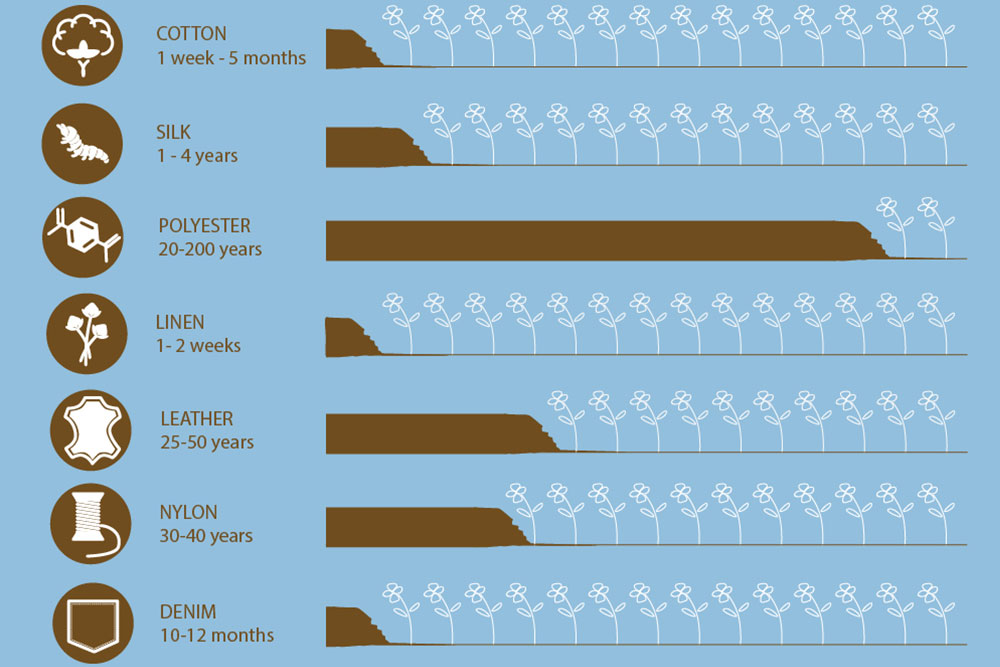In today’s age of technology, where shopping is accessible at our fingertips and the newest fashion is available to buy fresh off the runway, buying excessively and frequently has become more common than ever. But buying more often leads to throwing away more as trends run out of fashion. While cheaper fashion might make it seem like it's okay to dispose of these pieces, more often than not, it's the environment that bears the brunt of it all. According to the New Plastics Economy: Catalysing action report by the Ellen MacArthur Foundation (2017) more than $500 billion of value is lost every year due to clothing underutilization and the lack of recycling. Let’s take a look at what happens to your fashion articles once you get your hands off them and throw them out.

Cotton:

One of the most biodegradable fabrics, 100 per cent cotton or organic cotton can take anywhere between a week to five months to completely decompose. Cotton blended with any other non-biodegradable fibre, however, is no longer decomposable regardless of the blend ratio.
Silk:

Silk is biodegradable since it is a natural protein fibre, made from insect cocoons. However, pure silk is super durable and starts decomposing after four years. Targeted composting methods can help the fabric to decompose within one to two years.
Polyester:

This plastic-based fabric can take anywhere between 20 to 200 years to decompose. Polyester is a man-made fibre derived from petroleum, and despite taking really long to decompose, it’s also responsible for polluting the environment in which it is left to decompose.
Linen:

Derived from the flax plant, linen is another natural fabric that can decompose fast. Pure and undyed linen can take as little as two weeks to completely biodegrade. Cutting the fabric up into smaller pieces also helps speed up the decomposition process.
Leather:

Leather, essentially made of collagen cells from animal skin, is fully biodegradable. However, most commercially used leather is tanned as a way to prevent it from decaying. These tanning processes make its decomposition slower, taking anywhere between 25 to 50 years.
Nylon:

Nylon, mainly found in swimwear, hosiery and activewear, is used widely for its durability and water resistance. These attributes make it difficult for the plastic-based fibre to decompose easily, taking between 30 to 40 years.
Denim:

Denim is made of 100 percent cotton, and although sturdy, it takes 10 to 12 months to fully biodegrade. However, denim that is blended with other synthetic fibres like spandex for added stretch can take much longer depending on the ratio of the blend.
Dyes:
Most commonly used synthetic dyes are petroleum-derived and used in most garments. While these do decompose along with the fabric, these dyes entering any ecosystem is extremely harmful, whether it is inhaled or ends up coming in contact with skin.
So what can we do to help?
• Pick fabrics that decompose quicker and aren’t harmful to the environment.
• Avoid blended fabrics that may take longer to decompose.
• Pick out trims made of metal or plastic-like zippers or buttons and try to reuse them in other garments.
• Pick garments that are dyed using vegetable or natural dyes as opposed to synthetic ones.
• Last but not the least, throw less and buy less. The longer you use your clothes, mend and repair when needed, the lower your fashion-related carbon footprint.
Images used for representational purposes only.